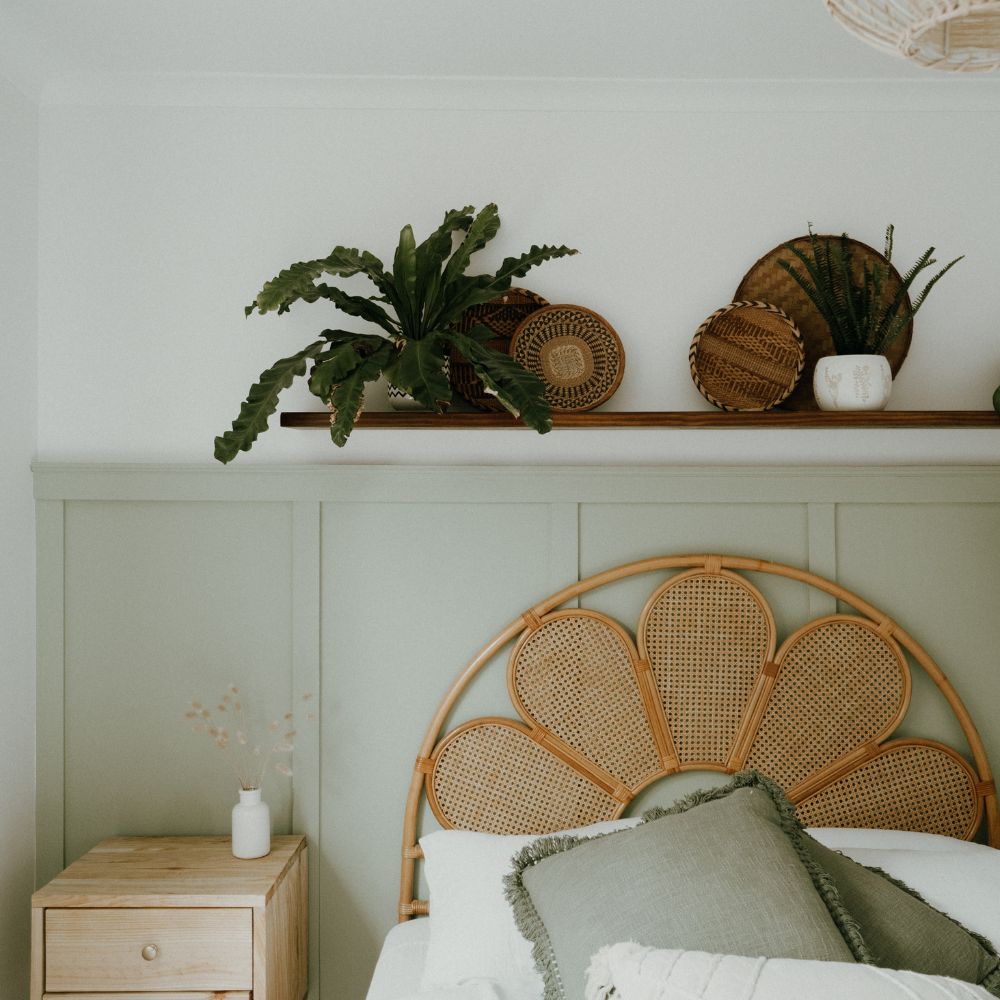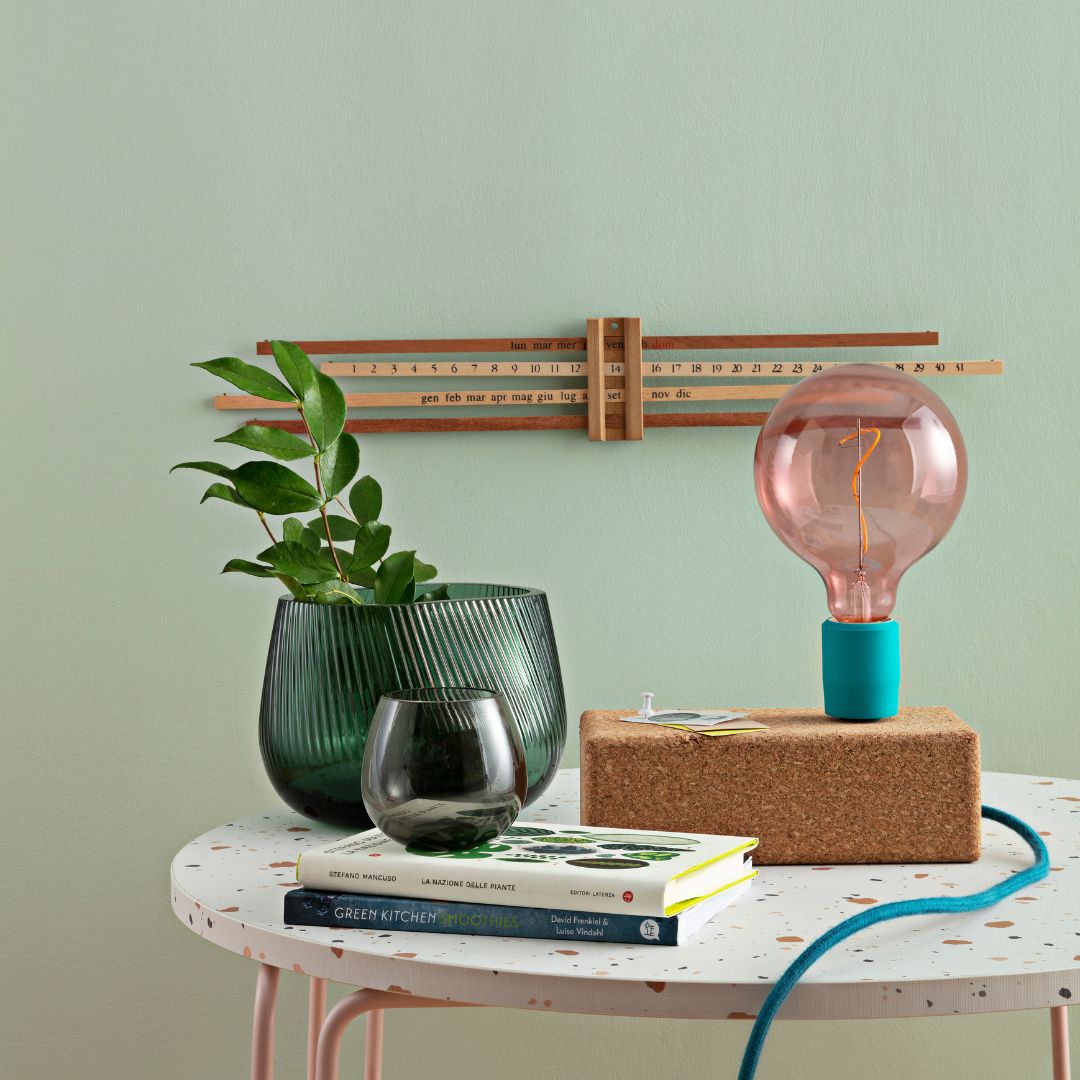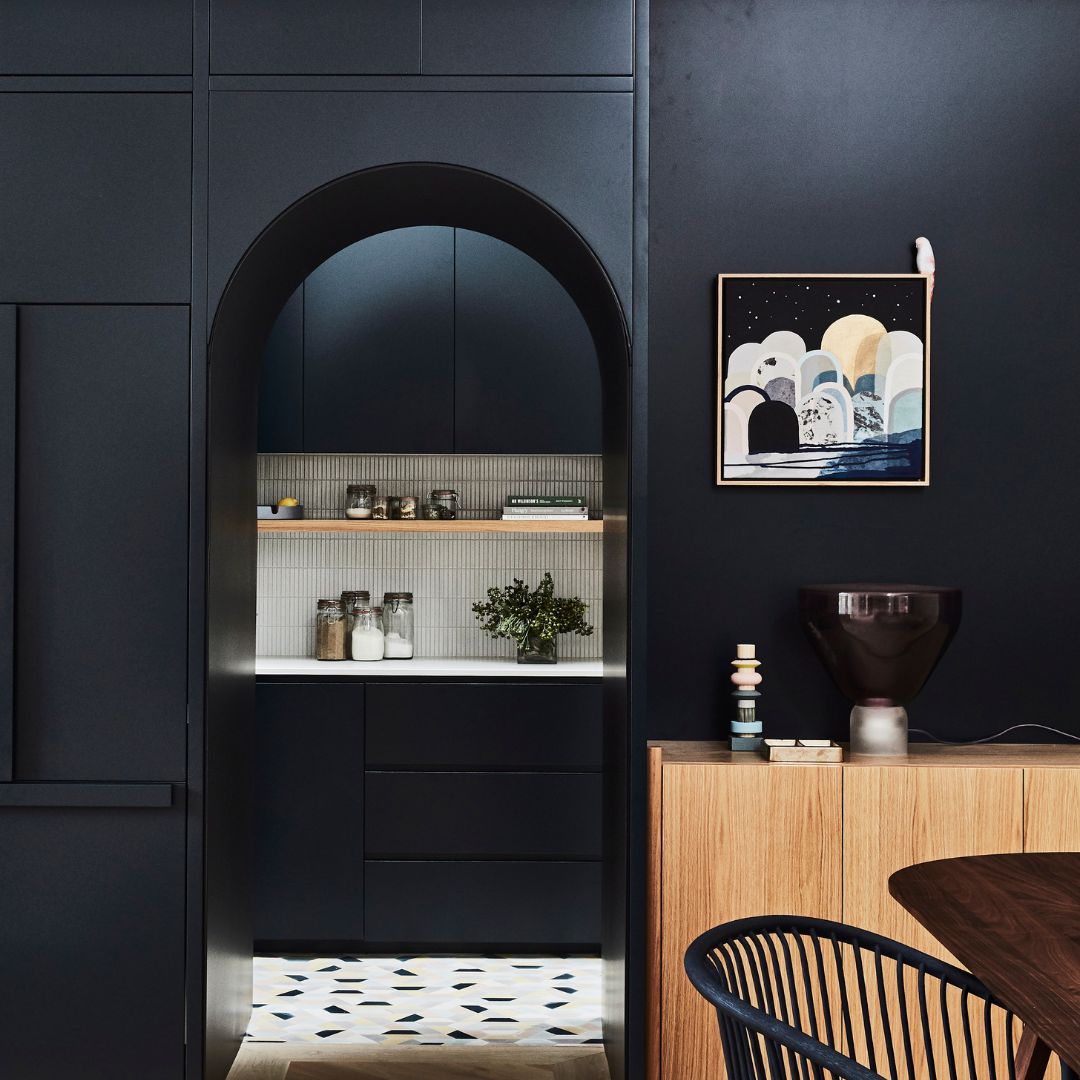The ceiling is an inseparable element of a painting project, however it is sometimes forgotten to the detriment of other elements such as the choice of paint for the walls or the interior decoration.
Painting your ceiling can transform your room and add a fresh look.
While this isn't the easiest part of a painting project, we offer some guidance on painting the ceiling.
Make sure you have the necessary tools to paint your ceiling
Before you begin painting your ceiling, you'll want to make sure you have all the necessary tools to successfully paint your interior ceiling. Beyond choosing the right paint, a few tools are recommended to make the job easier.
To paint your ceiling, you will need the following tools:
- a sash brush for painting corners precisely
- masking tape to protect the corners
- a protective tarpaulin to cover the floor and furniture in the room
- a 14 mm microfiber roller with a telescopic sleeve or handle
- A stepladder can also be useful for added comfort
Prepare the surface in advance
As with any wall surface, preparing the ceiling is a crucial step to ensure the paint is applied correctly in your interior.
It is therefore important to inspect the condition of the ceiling and clean it before painting it.
First, you can remove dirt, dust and any cobwebs using a feather duster.
At the end of this step, washing can be considered with a soft cloth slightly dampened with soapy water to remove the last impurities.
If the ceiling has any rough spots, this is also the time to repair any holes and cracks in the surface with filler. Once the filler is dry, you can sand your ceiling to achieve a smooth surface.
Don't skip the undercoat!
Yes, even if your ceiling is already painted white and is clean , the undercoat will still be recommended .
The undercoat will have several advantages, including being able to standardize your surface and guarantee better adhesion of the finishing paint that will be applied.
Applying an undercoat also helps achieve the best possible result, so even if it's tempting to skip the undercoat to save a few euros and a little time, choose the best possible result.
Matte, satin or velvet: which finish for a ceiling?
If the question exists for walls, it also exists for ceilings (although the choice is a little simpler).
If matte, satin and velvet finishes are applicable on a ceiling, the matte finish will be more suitable.
The satin finish is shinier and with the light from the ceiling, any marks will be more visible: this is why applying satin requires great care.
In humid rooms like the kitchen or bathroom, a satin finish will be perfectly suited because it is more resistant to stains and water and cooking vapors. The washability offered by satin makes it a first-choice finish in this type of room.
In other rooms, matte is recommended for several reasons. Matte tends to reflect less light, and brightness will therefore have less impact on the finish. While this isn't always desirable for walls, it has its advantages on ceilings: defects in the surface and any roller marks will be less visible.
Protect your walls and floors
Before you start painting, you will need to protect your walls and floor to prevent drips and spills.
The tarpaulin will allow you to protect your furniture and floor with complete peace of mind; don't hesitate to fix it with smooth masking tape.
For more comfort during application, also remove the light fixtures.
Applying your paint for a streak-free ceiling
Depending on the type of application chosen (roller or gun), the application method may differ slightly.
The first step is to “clear the corners” and then paint the edges with the edging brush to create the demarcation with the edges.
In addition to brush-painted corners, you can also use smooth masking to avoid bleed-through.
Regardless of the application method used, we recommend not applying the paint excessively to the ceiling to avoid drips and unevenness that may result when drying.
When applying with a spray gun, it is recommended to use a low-pressure gun, which will allow you to better control the flow and pressure. The paint must be diluted with water up to 10% to achieve satisfactory print quality on the surface.
Flow control is particularly important, especially on the ceiling to avoid over-application and also splashes or drips.
Another advantage: if the ceiling has moldings, the gun will be perfectly suited, because this type of place is difficult to access with the roller.
When applying with a roller, we recommend working in small areas of one square meter to achieve the most even result possible. The key to achieving a streak-free ceiling is to load your roller moderately to apply a thin, thick layer to the surface.
When finishing a section of a surface, don't hesitate to go over it again with the roller without reloading the roller to even out the surface and distribute any potential excess paint. Avoid taking breaks when starting a section to limit the impact of roller marks.
Light is an important criterion in carrying out your project: start with the brightest areas and, as far as possible, face the light as often as possible to avoid any possible streaks and imperfections.
As with wall surface application, you will be recommended to apply one coat of primer and two top coats.
What color should I apply to the ceiling?
There are no rules regarding ceiling color, although in the vast majority of cases, white is used. White can be standard or cream, depending on the color applied to the walls.
In rooms with a larger surface area, it is entirely possible to play with colors and use a shade on the ceiling: be careful, however, it is recommended to do this in a room that is spacious enough to avoid giving the visual impression of a room smaller than it is.
When choosing a ceiling color, the existing decor and the brightness of the room will be two very important criteria.
If you need help choosing your colors, particularly regarding the choice of shade for the ceiling, you can contact our decorator Anne-Sophie and benefit from personalized and free color advice .
Validate the amount of paint needed for the ceiling of a room
There's nothing more frustrating than running out of paint on your construction site, which is why it's important to plan ahead and make sure you have enough paint to paint your ceiling, or even a little extra to make sure you don't run out. Therefore, it's very important to do the calculations in advance.
To best support you, follow these three recommendations:
- calculate the area of your ceiling in m² (equivalent to the length multiplied by the width)
- Consider the manufacturer's recommendation for paint coverage, which will determine how much paint to purchase. Algo paints, for example, have a coverage of 12m²/liter per coat applied.
- Be careful with the number of coats required, which often means doubling the quantity, given the recommendation to apply in two coats. If applying with a spray gun, it is also a good idea to allow for a 20% surplus.
To find out how much paint you need, divide the area of your ceiling by the manufacturer's estimated coverage. This will give you the amount of paint needed for one coat.
Even simpler, our paint calculator will make your task even easier!








